By Aimee Sawyer, Product Marketing Manager at Khan Academy Kids and former teacher
Kindergarten is a formative year for math skills. This is the time when kids should start developing their “number sense”—the ability to understand, connect, and manipulate numbers.
By the end of Kindergarten, kids should easily recall the counting sequence and use it to solve simple math problems. They should have a strong understanding of the relationship between numerals and their quantities. And they should start exploring ways to build and take apart numbers. These skills will give kids a strong foundation for the rest of elementary school and beyond.
Browse this article for an overview of key Kindergarten math skills and tips for teaching them to kids. We recommend the free Khan Academy Kids app to anyone looking for fun, free Kindergarten math games.
Counting sequence
From a very young age, kids can start mimicking the counting sequence, which is essentially listing number names in the correct order (i.e., “1,2,3,4…). By the end of Kindergarten, kids should be able to count all the way up to 100!
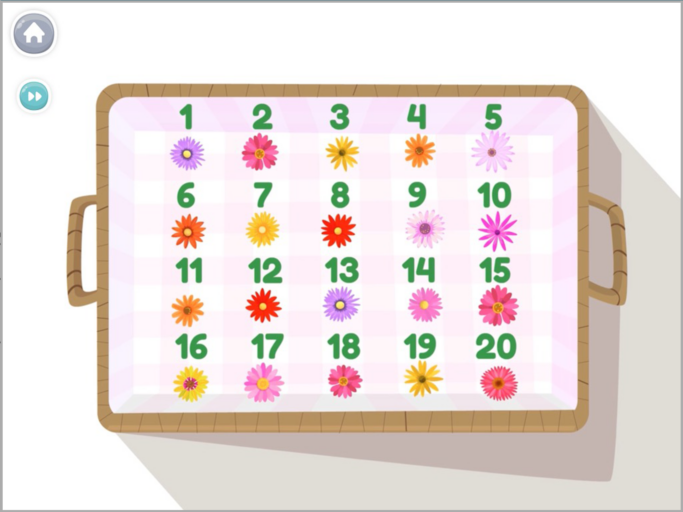
1:1 correspondence
When a child learns 1:1 correspondence, they understand that one object corresponds to one number in the counting sequence. Eventually, kids will use this skill to count a group of objects and say how many there are.
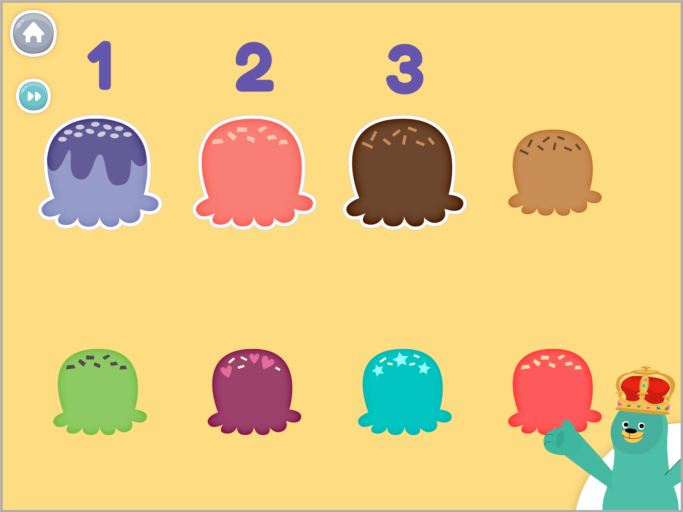
Count to tell the number of objects
Kids combine their knowledge of the counting sequence and 1:1 correspondence to count a group of objects and accurately say how many there are.
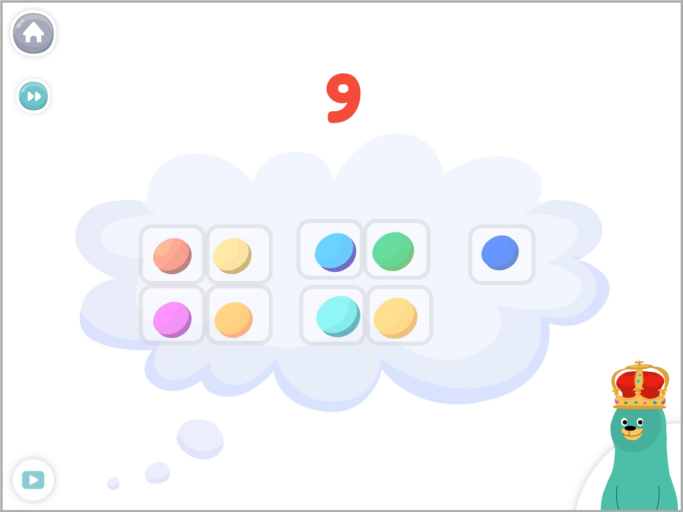
Subitizing
Subitizing is the ability to look at a group of objects and immediately know the quantity they represent without counting one by one. This helps build automaticity with addition and subtraction.
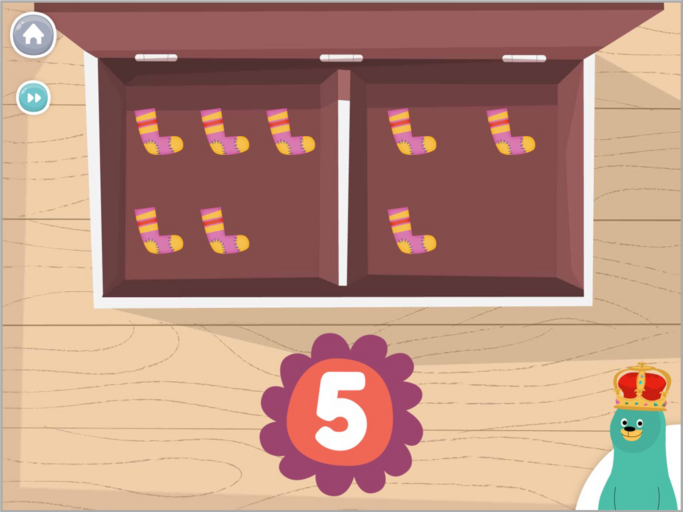
Numeral recognition
For little kids, it’s easy to look at a picture of four dots and understand that it represents the concept of “four.” It’s much harder to look at the numeral “4” and correlate it to the concept of “four.” When you think about it, numerals are really just symbolic shapes that kids have to memorize, similar to the letters of the alphabet. We can help kids learn their numerals by showing them next to the quantity over and over again, and in a variety of contexts.
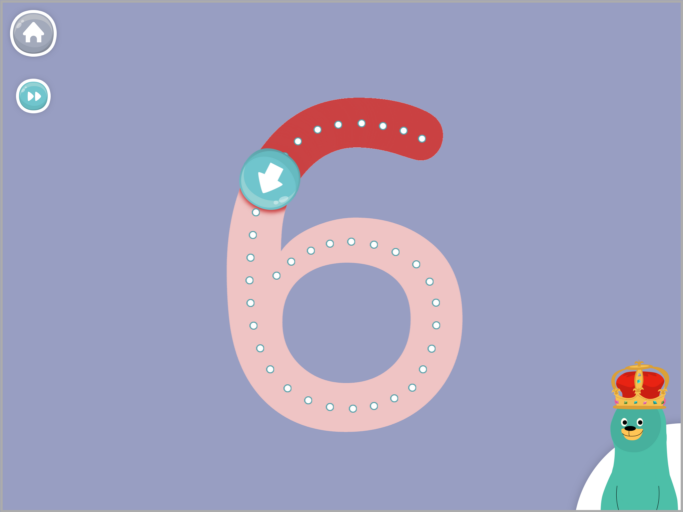
Comparing numbers
This skill starts with a basic understanding of “more” and “less,” but quickly gets more complex. Can kids tell the difference between a group of 7 objects and a group of 8 objects? What if there are no objects to count, and kids have to compare numerals instead?
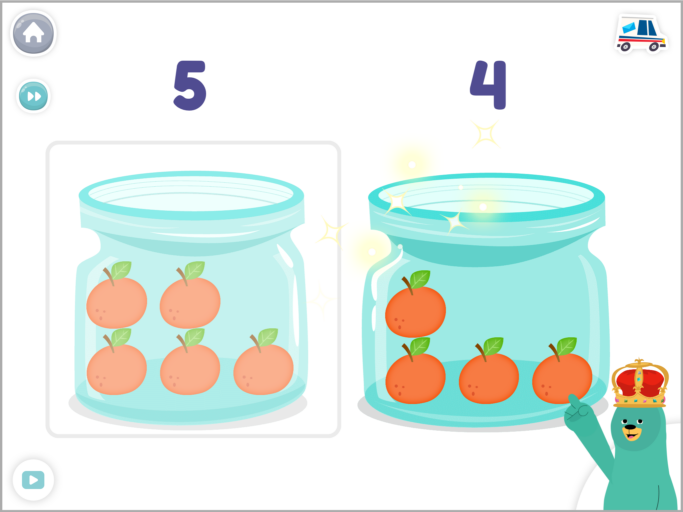
Basic addition and subtraction
By the end of Kindergarten, kids should be able to solve all addition and subtraction problems within 5. In order to accomplish that, we need to make sure they have a wide variety of problem-solving strategies at their disposal!
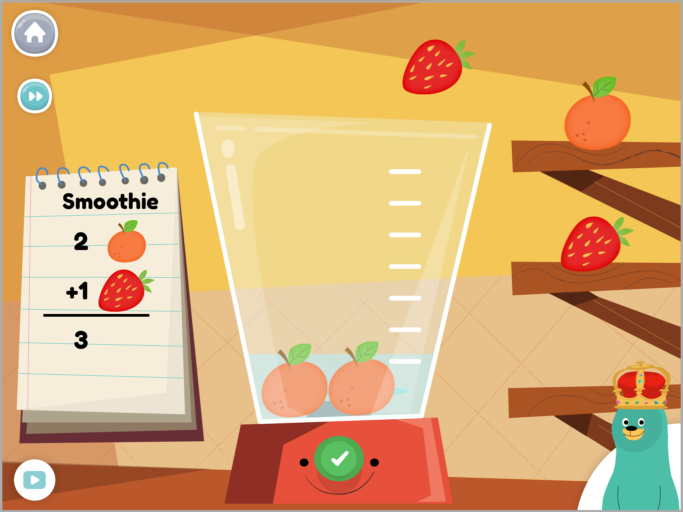
Shape recognition
It’s important for kids to learn to recognize simple shapes like squares, circles, and triangles, but it’s also important to start learning about their attributes. What makes a square a square? Can they draw a circle without looking at a reference image? Can they find shapes in the world around them?
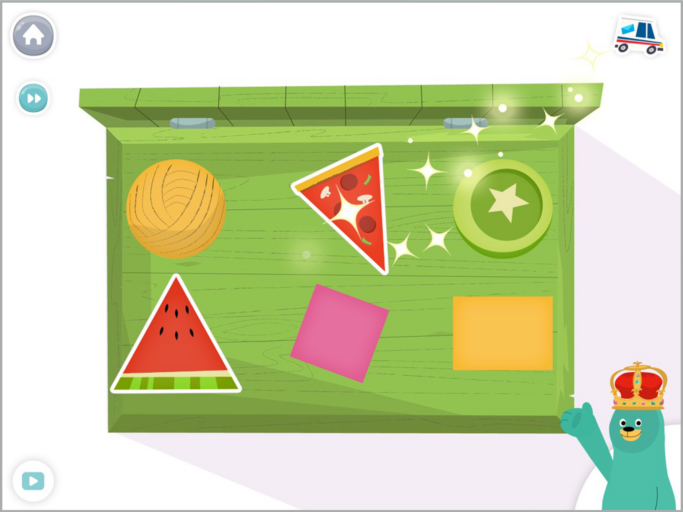
Patterning
Patterns are limited to the world of math. They’re also in nature, in daily routines, in music, and more! Pattern recognition is one of the most important part of algebraic thinking. Get started by helping kids identify simple “ABAB” patterns and ask them to fill in blanks or continue the pattern.
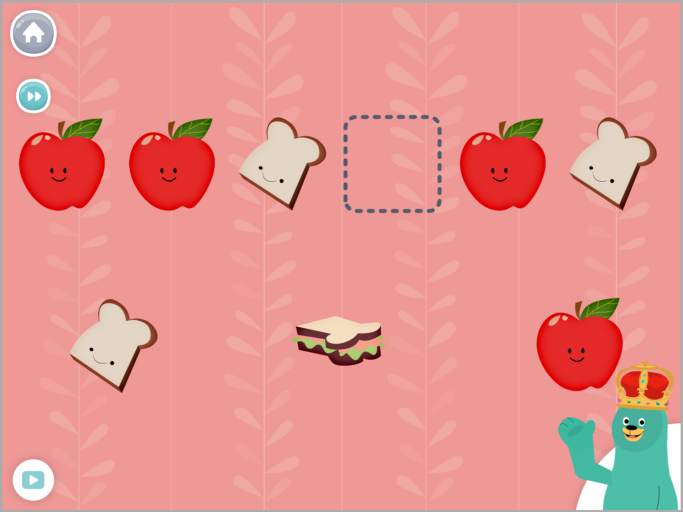
We recommend the free Khan Academy Kids app to anyone looking for free Kindergarten math games. The games are fun and interactive, and they give kids a hands-on math experience without having to use manipulatives or other physical materials. The Khan Academy Kids app is completely free, with no ads or subscriptions. Download today!
Get the Khan Academy Kids app
100% free. No ads, no subscriptions